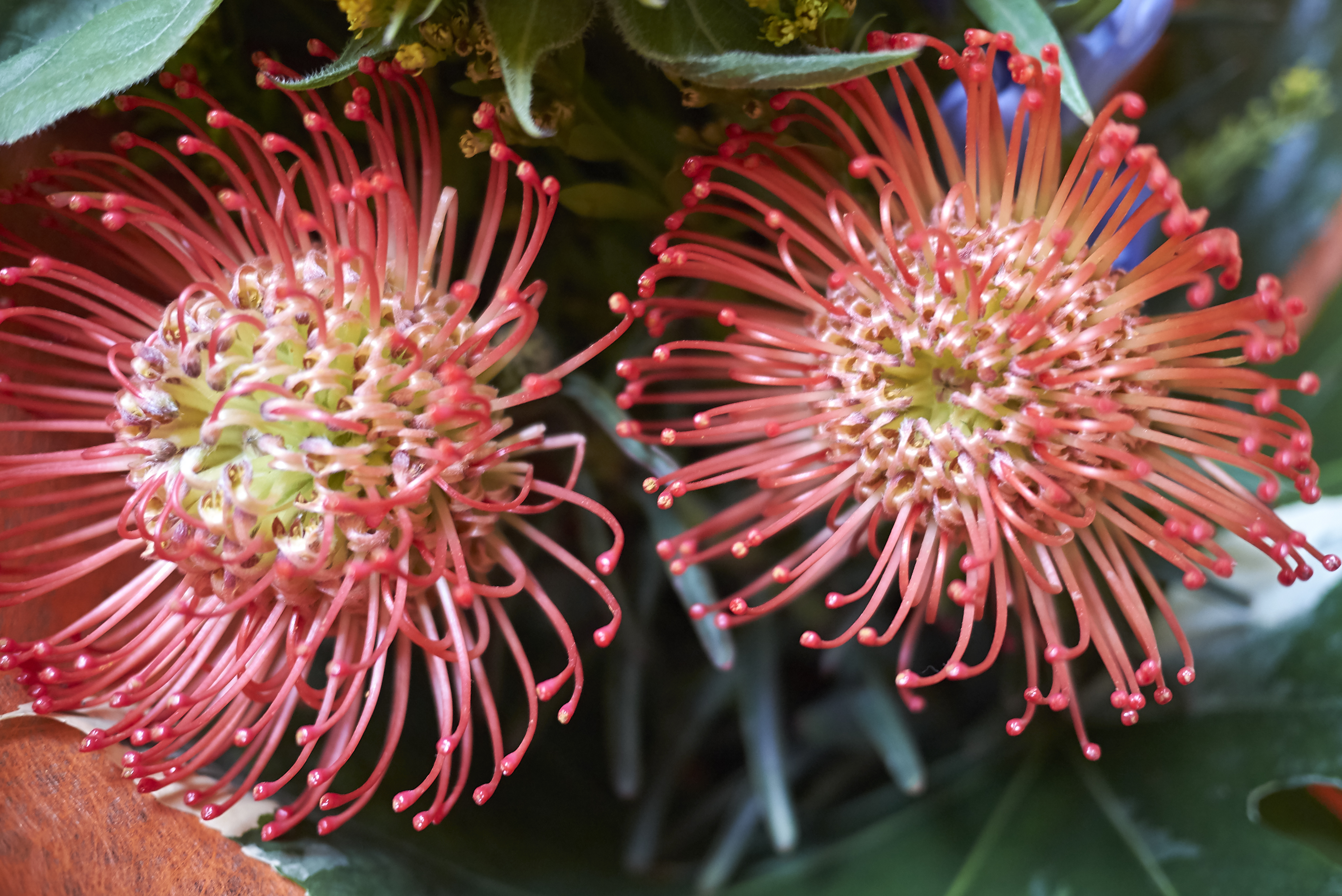Riversdale pincushion
(Leucospermum winteri)

Description
Leucospermum winteri is an evergreen, rounded shrub up to 1⅓ m (5 ft) tall in the family Proteaceae. Its slightly smelling flower heads can be found between July and December, and are pollinated by insects such as flies and bees. About two months after flowering the fruits are ripe and fall to the ground. Here, these are gathered by native ants that carry them to their underground nests, where the seeds remain safe until overhead fire and removal of the biomass trigger gemination. The plants of this species do not survive the fire that occurs naturally in its fynbos habitat. This species is an endemic of the Langkloof between the Gourits River Valley and Garcia's Pass in the Langeberg, where it occurs on the ridges at 1100–1300 m (3600–4250 ft) elevation. Although only a few hundred plants are known, the population is stable, so the species is only regarded near threatened. It is called Riversdale pincushion in English. Leucospermum winteri is a small, evergreen, rounded shrub of about 1⅓ m (4¼ ft) high and up to 2 m (6½ ft) in diameter, that develops from a single stem. The flowering branches are covered in downy hairs and are ½–¾ cm (0.2–0.3 in) thick. The leaves are set alternately along the branches somewhat overlapping at an upward angle, and lack both stipules and stalk. They are broadly inverted egg-shaped to broadly wedge-shaped, 4–7 cm (1.6–2¾ in) long and 2–4½ cm (0.8–1.8 in) wide, and are initially covered in soft crisped hairs with some straight hairs in between, that vanish later on. Towards the tip, there are five to fourteen blunt, reddish, thickened teeth.
Taxonomic tree:







